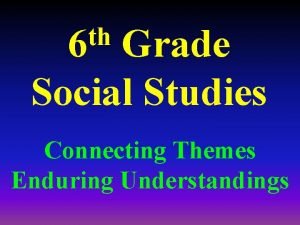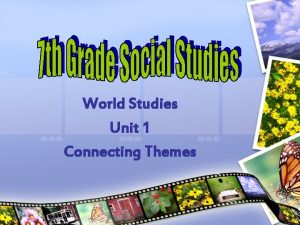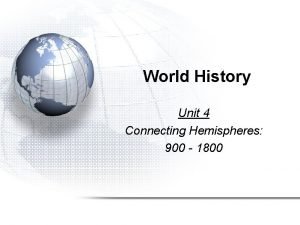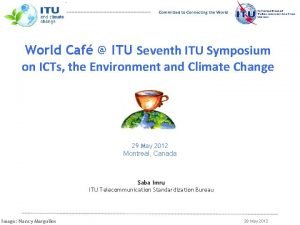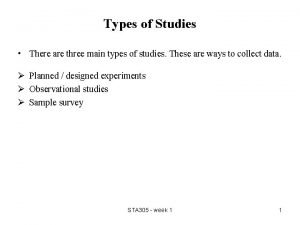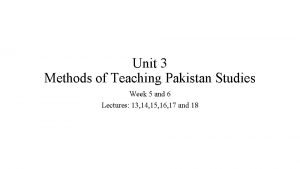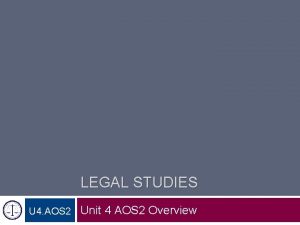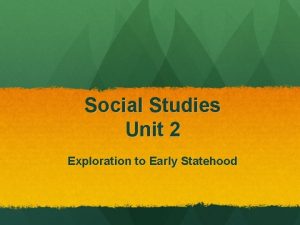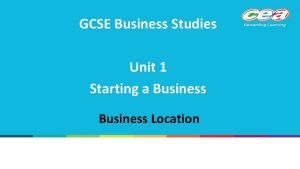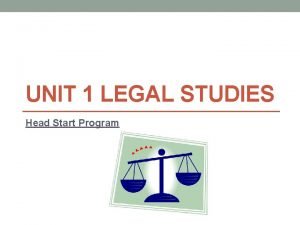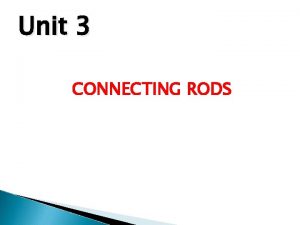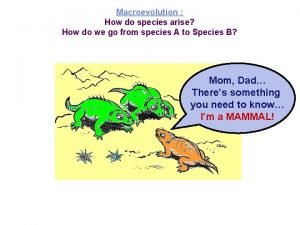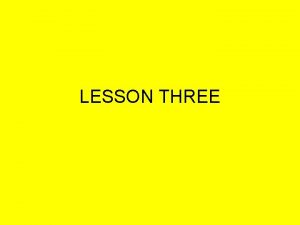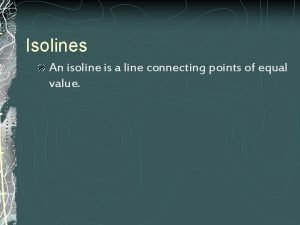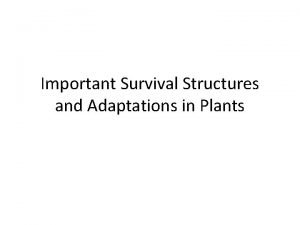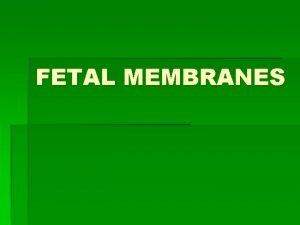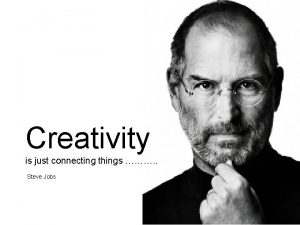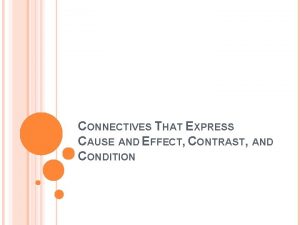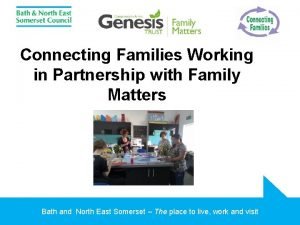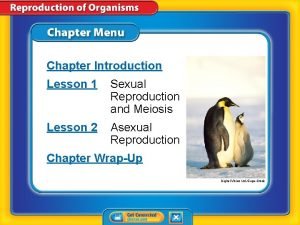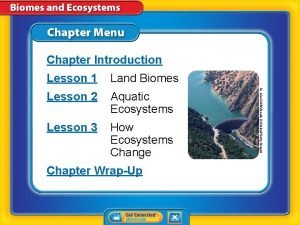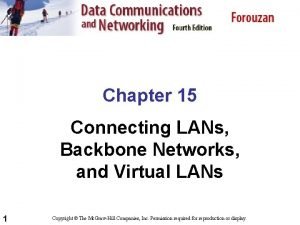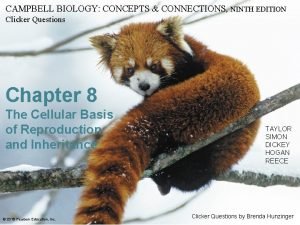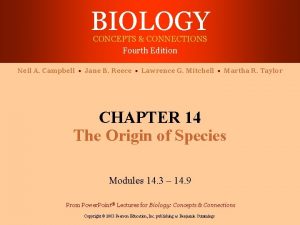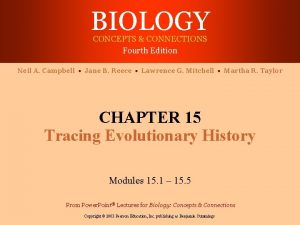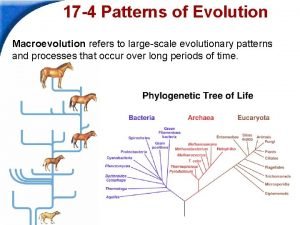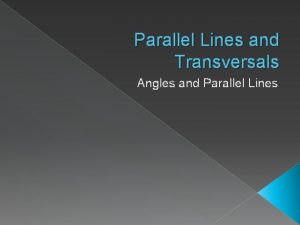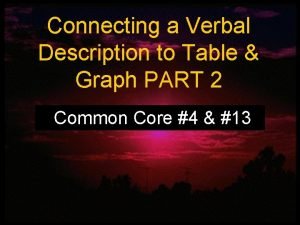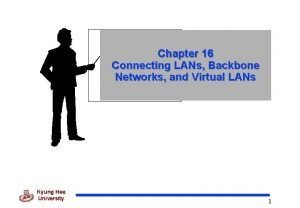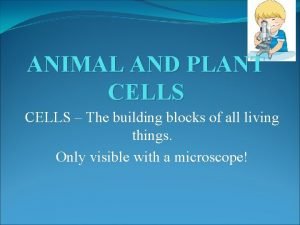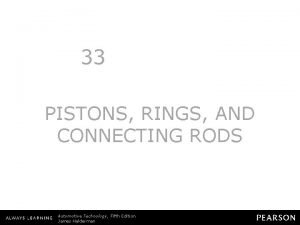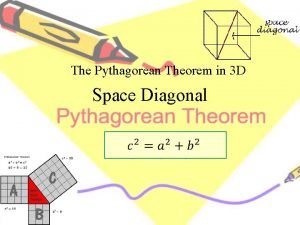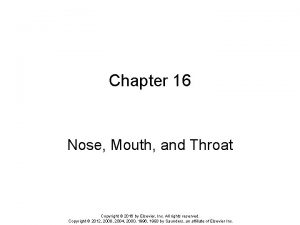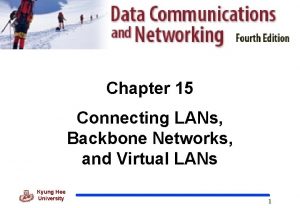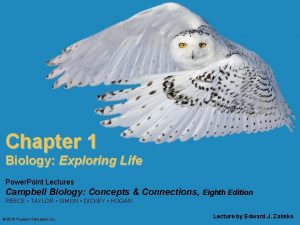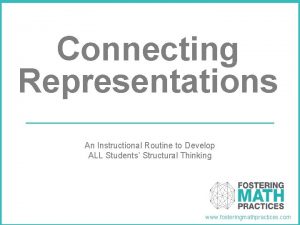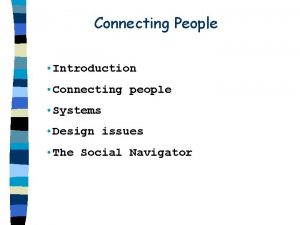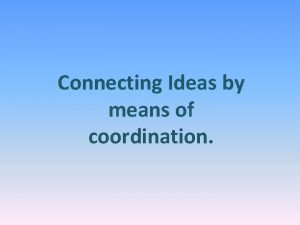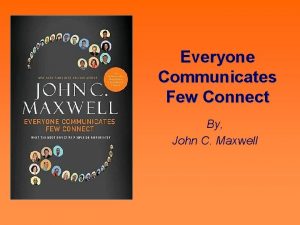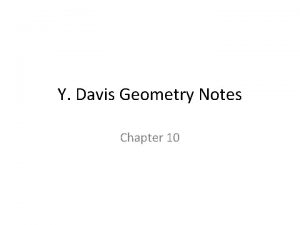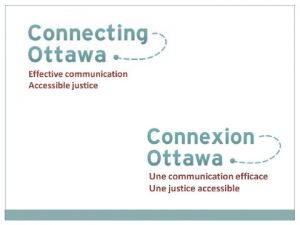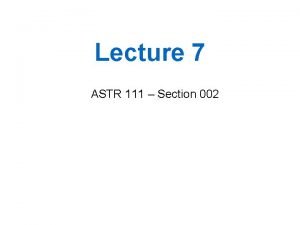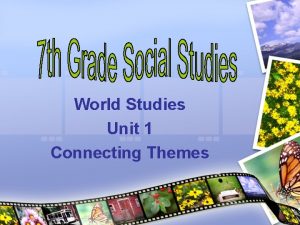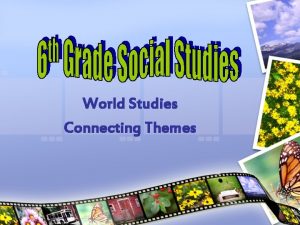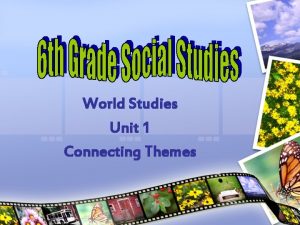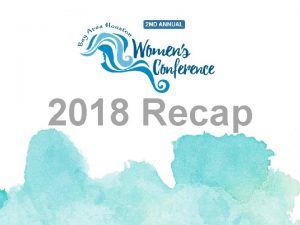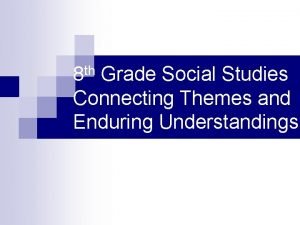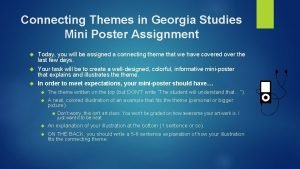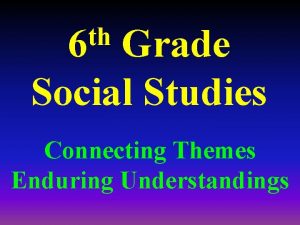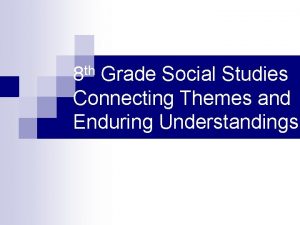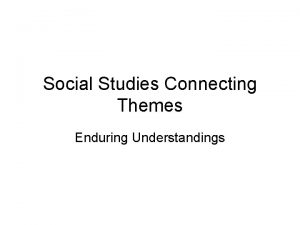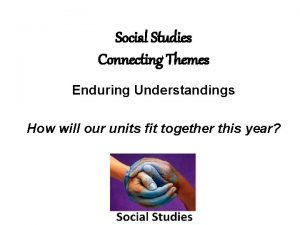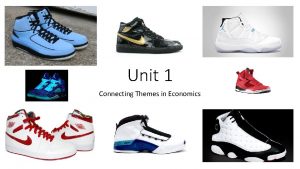World Studies Unit 1 Connecting Themes When there






















































- Slides: 54

World Studies Unit 1 Connecting Themes

When there is conflict between or within societies, societies change is the result. The culture of a society is the product of the religion, beliefs, customs, traditions, and government of that society. As a society increases in complexity and interacts with other societies, the complexity of the government also increases Humans, their society, and the environment affect each other. Location affects a society’s economy, culture, and development The movement or migration of people and ideas affects all societies involved. The production, distribution, and consumption of goods/services produced by the society are affected by the location, customs, beliefs, and laws of the society. While change occurs over time, there is continuity to the basic structure of that society. Unit 1 has no standards 1: When you have conflicts with your friends does it change your friendship? If so, how? 2: Why doesn’t conflict always involve physical contact? 3: Why does change occur when there is conflict between or within societies? (elements, vocabulary, and other related material) 1: How do you describe your family’s culture? 2: Why are cultures around the world different? 3: Should schools try to influence or reflect the students’ cultures? Explain. 4: What cultural conflicts have you seen in your school, the U. S. , or the world? 1: How have your responsibilities changed as your family has changed or as you have gotten older? 2: How do the rules in sports change at different levels? (i. e. Tee ball through Major Leagues) 3: How have society and government adapted to each other’s growing complexities? 1: How does the local physical geography influence the jobs that are available near you? 2: Why does human environmental interaction have both positive and negative consequences? 3: How do societies and the environment adapt to each other? 1: Why do people eat different foods in different parts of the world? 2: How does location affect the jobs people have? 3: How might location affect a society’s or community’s economy, culture, and development? 1: Why do people move? 2: How do people change when they move from one place to another? 3: How does the migration and/or movement of people/ideas affect the societies involved? 1: How do you decide what to buy? 2: Why are production, distribution, and consumption of goods and services important in a healthy economy? 3: How is the economy affected by the location, customs, beliefs, and laws of a society? 1: How has school changed and stayed the same since kindergarten? 2: How can a society change but have its basic components remain the same over time? 3: Why do some things remain the same when society is always changing?

Unit 1 Performance Task Interactive Museum Exhibit The curator of a local museum has asked you to help build a new interactive exhibit on the eight themes of Seventh Grade Social Studies. You will create a display of themes and enduring understandings using posters. Directions: Select a theme randomly (teacher will give you this). On a sheet of notebook paper, write your theme at the top of the paper. Keep this in your notebook. As we go through this unit write down examples of your theme as we discuss it in class. Brainstorm ways that you could show that you understand theme. For homework, you will look for visuals to display on your poster that will show you understand your theme (use internet, magazines, and newspapers). You will create an UNLABELED display on ½ poster board or drawing or computer paper that demonstrates your understanding of theme selected. Your poster must present visual evidence and clues to the connections you’ve made with theme selected; however, you must NOT identify theme. For example: If you are including a picture on your poster, you should not label any parts of the picture. You may highlight, shade, or circle the area significant to your theme. Do not put the name of your theme or its enduring understanding on the poster. Use the rubric and these directions to help you. I will use the rubric to determine your grade.

Rubric for Interactive Museum Exhibit Poster identifies theme through visual examples. 1 – Below Standard 2 – Improving 3 – Meets Standard No theme is identifiable through visual evidence. Specific theme is questionably identifiable through visual evidence. Student must justify how the data relates to theme. Specific theme is identifiable through visual evidence. 4 – Exceeds Standard Specific theme is identifiable through visual evidence. Student went beyond the basic requirements. Student shows higher order thinking skills by using complex connections.

http: //www. youtube. com/watch? v=J 0 Qu 6 ey yr 4 c&feature=related. Link to 911 video:

UNIT 1 - KEY VOCABULARY Beliefs Change Complexity Conflict Consumption Continuity Culture Customs Services Distribution Goods Governance Interaction Physical Geography Production Structure Traditions Economy Environment Location Religion Migration Movement Society Standard of Living

• a fight, battle, or struggle • to be in or come into opposition; differ • a state of opposition between persons or ideas or interests • a disagreement or argument about something important

• an organized group of persons associated together for religious, benevolent, cultural, scientific, political, patriotic, or other purposes.

When there is conflict between or within societies, change is the result.

Conflict and Change When there is conflict between or within societies, change is the result.

What’s the conflict? What change was the result?

• flow, progression • uninterrupted connection or union • the state or quality of being continuous

While change occurs over time, there is continuity to the basic structure of that society.

While change occurs over time, there is continuity to the basic structure of society. Time, Change and Continuity

How have things changed in Stockbridge, Georgia, over time? What things will remain constant over time?

Based on these photos, how has this society changed over time? How is continuity shown?

• all the knowledge and values shared by a society • The sum of attitudes, customs, and beliefs that distinguishes one group of people from another. Culture is transmitted, through language, material objects, ritual, institutions, and art, from one generation to the next.

Culture The culture of a society is the product of the religion, beliefs, customs, traditions, and government of that society. http: //www. youtube. com/watch? v=16 fv. Ton. R_g. A& feature=relate d http: //www. youtube. com/watch? v=s. LEr. Pqq. CC 54&NR=1 Untouched Amazonian Tribe Caught On Camera

What Makes Up Culture? Institutions Government Foods Traditions, Customs, Beliefs CULTURE Art Dress Language Religion

What factors influence our culture?

• a method or system of government or management • the act, process, or power of governing; government

• complicated in structure; consisting of interconnected parts • not simple; as, a complex being; a complex idea. • Involving many parts; complicated; intricate

Governance As a society increases in complexity and interacts with other societies, the complexity of the government also increases.

In sports, how does the complexity of rules change as players move up in a career?

Kern County Courthouse, California 1866 1896 1922 1952

Tokyo Metropolitan Government Complex, 1991

Which society would have the most complex system of government? Why?

More people = more businesses = more protection = more laws = more complexity in government. More interaction between different groups = more laws and government.

• a place of settlement, activity, or residence. • A place where something is or could be located; a site.

• the system of production and distribution and consumption • organization of money and resources

Location Cow on busy street in Bombay, India Location affects a society’s economy, culture and development.

How does the location of each of these communities affect its economy, culture, and development? Laguna Beach, CA Mountain village in Nothern Pakistan Desert community near Luxor, Egypt 11 -24 -07

• to go from one country, region, or place to another. • move, resettle. • to make such a move either once or repeatedly. • Migrate is applied both to people or to animals that move from one region to another, especially periodically.

Movement/Migration The movement or migration of people affects all societies involved. http: //www. youtube. com/watch? v=o. D 3 T 6 WCGz. Ac& feature=related Oregon Trail Video

Movement/Migration Arriving at Ellis Island, New York Harbor The movement or migration of people affects all societies involved.

Mongolian villagers migrate to the ever What do you decreasing grassland regions to escape think these desertification of areas of Inner Mongolia. people are doing?


REMEMBER!!!!! People must have water to survive. First 3: 35 minutes of Blue Gold: World Water Wars - Part 1/9 http: //www. youtube. com/watc h? v=v. Lp 1 Znjs. IXc GOOD: Water http: //www. youtube. com/watch? v=HW 5 e. Bf. Zh. E 4 M&feature=rela ted *In every society, the most heavily populated areas will be along the river valleys and along the seacoasts.

• surroundings • the area in which something exists or lives • all of the social and cultural conditions that influence the life of an individual or community

• act together or towards others or with others. • to act, or have some effect, on each other.

Human Environmental Interaction Humans, their societies, and their environment affect each other.

Which of the following describe the environment of this classroom? • • Quiet Noisy Structured Unorganized Attractive Boring Exciting • • Dangerous Supportive Scary Friendly State-of-art technology Literature rich Other How can your actions help or hurt the classroom environment?

Human Environmental Interaction http: //www. youtube. com/w atch? v=lsz 9 Fe. AB 8 s 8 How much longer will we wait? The future is in our hands. Music - “ONLY TIME” by enya

How do humans interact with the environment in order to survive? How does environment affect what humans eat?

* creation; manufacture

* To sell and ship or deliver (an item or line of merchandise) to individual customers, esp. in a specified region or area. * To deliver or pass out * To spread throughout a given area

• to use or use up consumer goods; to use up resources or materials • to purchase economic goods and services

• articles of trade; wares; merchandise • objects etc for sale, products

• the duty or work of public servants • the performance of any duties or work for another; helpful or professional activity • supplying aids or activities rather than products or goods

Production, Distribution, and Consumption: The production, distribution and consumption of goods/services produced by the society are affected by the location, customs, beliefs, and laws of the society

Why are gas prices so low in Kuwait City (. 79), Tehran (. 33), Riyadh (. 45), Cairo (. 86), Caracas (. 17)? World Gas Prices (somewhat out of date but still makes the point).

• Look at the label in your shirt or the shirt of the person in front of you. • Where was the shirt made? • Write down the name of the country. • Use the world map on page A 4 and A 5 in the social studies textbook and find the country.

• Write the name of the country on a small sticky note. • Place your sticky note in the correct location on this map of the world. (One row or group at a time – follow your teacher’s directions. )

2008 Beijing Olympics song"Welcome to Beijing“ As you watch this video, write down examples of the following themes that you see. Be specific in your descriptions. • Conflict and Change • Time, Change and Continuity • Culture • Governance • Location • Movement/Migration • Human Environmental Interaction • Production, Distribution, and Consumption http: //www. youtube. com/watch? v=So. St 7 B 57 u. WQ
 Connecting themes of social studies
Connecting themes of social studies World studies themes
World studies themes Connecting hemispheres world history
Connecting hemispheres world history Committed to connecting the world
Committed to connecting the world Paradigm shift from women studies to gender studies
Paradigm shift from women studies to gender studies What types of studies are there
What types of studies are there Unit 6 review questions
Unit 6 review questions Methods of teaching pakistan studies
Methods of teaching pakistan studies Unit 4 aos 2 legal studies
Unit 4 aos 2 legal studies Statistical average crossword
Statistical average crossword Business studies unit 1
Business studies unit 1 Social studies unit 2 test answers
Social studies unit 2 test answers Gcse business studies unit 1
Gcse business studies unit 1 Legal studies unit 1
Legal studies unit 1 Function of a connecting rod
Function of a connecting rod Hybrid fertility
Hybrid fertility Function of connecting rod
Function of connecting rod What is an isoline
What is an isoline Hook background thesis order
Hook background thesis order Connecting the concepts angiosperm reproductive structures
Connecting the concepts angiosperm reproductive structures Erytherocyte
Erytherocyte Connecting rod 2d diagram
Connecting rod 2d diagram Creativity is just connecting things
Creativity is just connecting things Connectives that express cause and effect
Connectives that express cause and effect Family matters pilot
Family matters pilot Connecting the concepts sexual reproduction
Connecting the concepts sexual reproduction Connecting the concepts aquatic biomes
Connecting the concepts aquatic biomes Connecting remote lans
Connecting remote lans Campbell biology concept check answers
Campbell biology concept check answers Connecting the concepts evolution
Connecting the concepts evolution Connecting the concepts evolution
Connecting the concepts evolution Section 17-4 patterns of evolution answer key
Section 17-4 patterns of evolution answer key Transversal connecting angles
Transversal connecting angles Connecting a verbal description to table and graph
Connecting a verbal description to table and graph A repeater is a connecting device that operates in the
A repeater is a connecting device that operates in the Image of plant cell
Image of plant cell Pistons rings and connecting rods
Pistons rings and connecting rods Diagonal pythagorean theorem
Diagonal pythagorean theorem Connecting families bath
Connecting families bath The cleft connecting the nose and mouth to the larynx
The cleft connecting the nose and mouth to the larynx A repeater is a connecting device that operates in the
A repeater is a connecting device that operates in the Connecting the concepts exploring life
Connecting the concepts exploring life Acti connecting vision
Acti connecting vision Connecting representations
Connecting representations Power bi dynamics 365 on premise
Power bi dynamics 365 on premise Smart connecting people
Smart connecting people Connecting ideas
Connecting ideas Connecting colorado staff
Connecting colorado staff Connecting the concepts: exploring life
Connecting the concepts: exploring life Connecting europe facility transport
Connecting europe facility transport Name all segments skew to bc
Name all segments skew to bc John maxwell connecting
John maxwell connecting The shortest arc connecting two endpoints on a circle
The shortest arc connecting two endpoints on a circle Connecting ottawa
Connecting ottawa Draw two lines one connecting the planet at position a
Draw two lines one connecting the planet at position a
